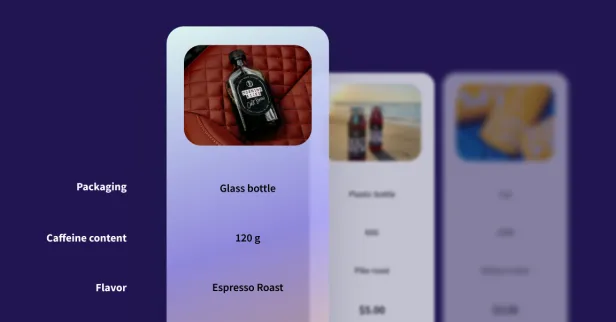Brand awareness is often a key critical milestone that any business needs to succeed. It’s the first step in building a connection with your audience and establishing long-term loyalty. This guide dives deep into the concept of brand awareness, why it’s crucial, how it differs from other branding metrics, and how to cultivate and measure it effectively.
What is Brand Awareness?
Brand awareness refers to the extent to which consumers recognize and remember your brand. It encompasses how well your target audience knows your products, services, and the values your brand represents. In essence, it’s about ensuring that when people think of a particular need or category, your brand comes to mind.
For example, when someone thinks about soft drinks, "Coca-Cola" might immediately pop into their head. This instant association is the result of strong brand awareness.
Brand awareness isn’t just about people knowing your name; it’s about how they perceive your brand in the context of their needs and experiences. It lays the foundation for trust, customer loyalty, and market presence.
Why is Brand Awareness Important?
1. The Goal of Brand Awareness
The ultimate goal of brand awareness is to establish a foothold in the minds of consumers so they consider your brand when making purchasing decisions. Without awareness, even the best products can remain unnoticed. Brand awareness aims to:
- Drive interest and engagement.
- Build trust and credibility.
- Foster long-term customer loyalty.
- Create differentiation in crowded markets.
2. Benefits of High Brand Awareness
- Increased Customer Acquisition: Familiarity breeds trust, which leads to higher conversion rates.
- Market Differentiation: In competitive industries, brand awareness sets you apart from rivals.
- Customer Loyalty: Awareness fosters emotional connections, paving the way for repeat business.
- Better Word-of-Mouth Marketing: Recognizable brands are more likely to be recommended.
3. The Ripple Effect
Brand awareness impacts multiple facets of your business, including sales, partnerships, and even employee recruitment. A brand that’s well-known and respected attracts not only customers but also top-tier talent and collaborators.
How Does Brand Awareness Differ from Brand Recognition or Brand Recall?
1. Brand Awareness vs. Brand Recognition
- Brand Recognition involves a consumer’s ability to identify your brand visually or audibly. For example, seeing your logo or hearing your jingle and immediately knowing it’s your brand.
- Brand Awareness, on the other hand, includes deeper associations and knowledge about your brand, such as its values, offerings, or unique attributes.
2. Brand Awareness vs. Brand Recall
- Brand Recall is a subset of brand awareness that measures how well consumers can retrieve your brand from memory without visual or auditory cues. For instance, thinking of "Nike" when asked about athletic footwear.
- Brand Awareness encompasses both recognition and recall, making it a broader metric.
Why These Distinctions Matter
Understanding these nuances is vital for setting clear marketing objectives. If your goal is to strengthen recall, you’ll focus on strategies like consistent messaging. For recognition, visual branding elements become more critical.
Types of Brand Awareness
Brand awareness can be categorized into two main types:
1. Aided Awareness (Brand Recognition)
This refers to consumers’ ability to recognize your brand when prompted with a visual or auditory cue. For example:
- A logo
- A tagline
- A specific product image
Aided awareness is often measured through surveys where respondents are shown a list of brands and asked which ones they recognize.
2. Unaided Awareness (Brand Recall)
Unaided awareness measures how well your brand comes to mind without any prompts. For example: Asking respondents to name a brand of smartphones they’d recommend.
This type of awareness indicates a stronger and more ingrained association with your audience.
How to Increase Brand Awareness
Building brand awareness is a long-term endeavor requiring a combination of strategic efforts. Here are some proven strategies:
1. Leverage Content Marketing
- Blog Posts: Publish high-quality content that addresses your audience’s pain points.
- Videos: Use engaging visuals to tell your brand’s story.
- Infographics: Share easy-to-digest data and insights.
2. Use Social Media
- Engage with your audience on platforms they frequent.
- Use trending hashtags and participate in conversations.
- Leverage user-generated content to showcase real customer experiences.
3. Collaborate with Influencers
Partnering with influencers in your niche can amplify your brand’s visibility and credibility.
4. Participate in Events
- Attend industry conferences and trade shows.
- Host webinars or virtual events to engage directly with your audience.
5. Offer Freemium Products or Trials
Letting potential customers try your product or service for free increases familiarity and trust.
6. Run Paid Advertising Campaigns
- Utilize Google Ads and social media platforms to target specific demographics.
- Invest in display advertising for broader reach.
7. Optimize for SEO
- Use relevant keywords to improve your search rankings.
- Ensure your website is user-friendly and mobile-optimized.
8. Partner with Other Brands
Collaborating with complementary brands can help you tap into new audiences.
9. Engage in Community Outreach
- Support charitable causes or sponsor local events.
- Show your commitment to social responsibility, which resonates with consumers.
-
How to Measure Brand Awareness
Measuring brand awareness ensures you’re on the right track and highlights areas for improvement. Here are the key methods:
| Surveys and Polls |
|
| Social Media Metrics |
|
| Website Traffic |
|
| Search Volume Data |
|
| Brand Mentions in Media |
|
| Customer Feedback |
|
| Net Promoter Score |
|
In conclusion, brand awareness is a critical component of building a successful business. It’s about more than just recognition; it’s about fostering trust, loyalty, and engagement. By understanding what brand awareness entails, why it’s important, and how to measure and grow it, you can position your brand for long-term success.
With consistent effort and the right strategies, your brand can become a household name in your industry. Remember, awareness is the foundation upon which trust and loyalty are built—and these are the true markers of a thriving brand.
